Exploring different coffee cultures comes with the risk of getting indulged. Your newly developed addiction to Vietnamese coffee might benefit from a phin filter. It’s the easiest way to make this delicious brew and comes in several sizes.
Phin coffee makers are deeply webbed in the coffee culture of Vietnam. But despite being traditional, they are a sustainable method to brew coffee. Read on to find out how to make phin coffee.
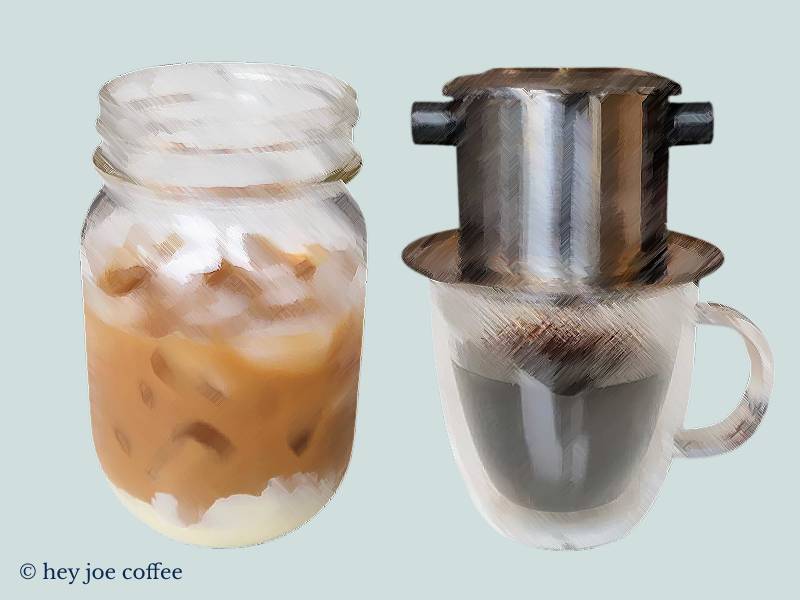
Topics Explored
- What Is A Phin Filter?
- Components Of A Phin
- How Does It Work?
- Iced Vietnamese Coffee Recipe
- Phin vs. French Press vs. Pour Over vs. Aeropress
- More Questions
What Is A Phin Filter?
The phin filter is a hybrid of a french press and the pour-over tool. It’s a traditional coffee brewing pot in Vietnamese culture. However, brewing coffee with this tool takes some time.
The phin is made of metal and doesn’t need a paper filter, which makes it highly sustainable and durable.

The similarity between the phin and the French press is not a coincidence.(1) The French brought coffee to Vietnam back in the 1800s, and condensed milk arrived a century later.
Shortly after , the coffee culture started developing; people spent hours drinking coffee and talking. The slow dripping phin complements the slow and relaxed vibes of French cafe culture.
Components Of A Phin Filter
The phin consists of 4 parts: lid, tamper, chamber, and plate. It brews the coffee as an espresso machine would but without the added pressure.
Instead, the coffee drips due to gravity, similar to pour-over coffee. The tamper keeps the coffee grounds packed, while the lid keeps the water hot.
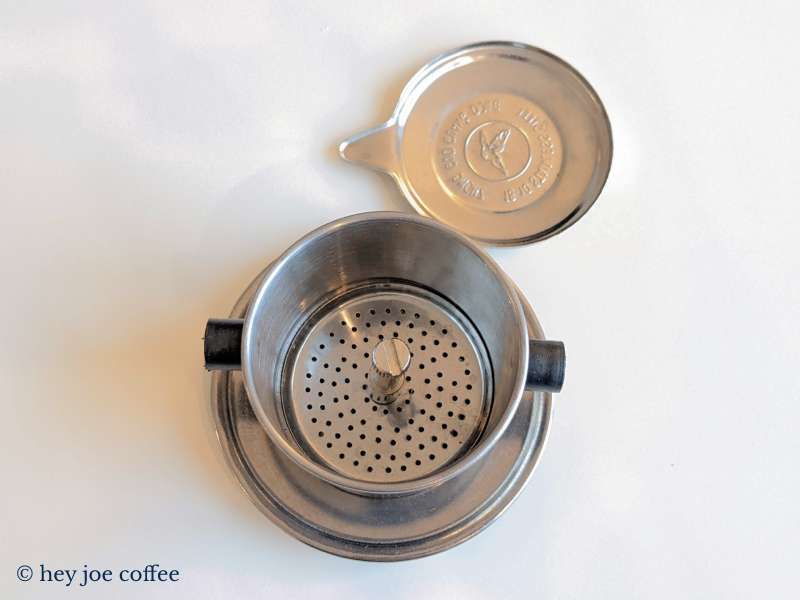
How Does A Phin Filter Work?
So how does a phin work? The number of parts might seem overwhelming at first. But the process is no more complicated than a french press.
Assembling the phin is easy, but waiting for the coffee to drip might take a while. Here’s how the process goes.
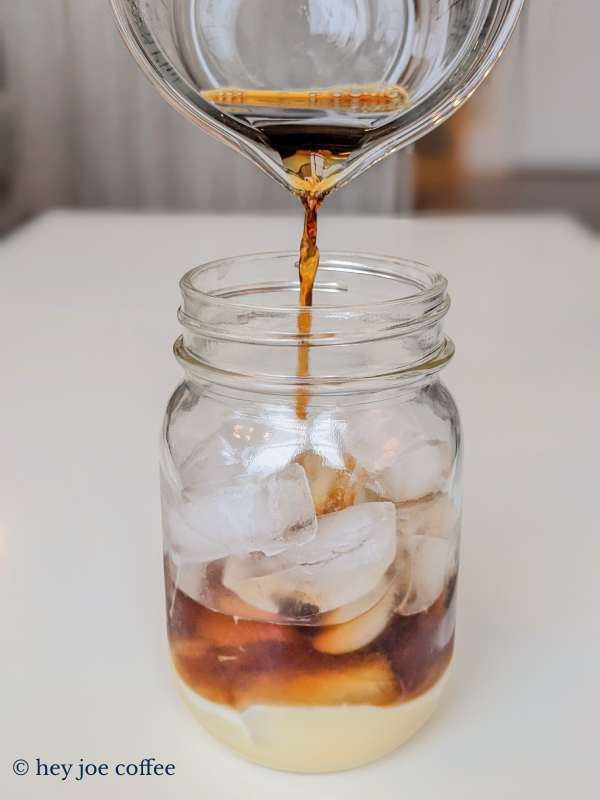
1. Brewing
Using the right coffee grounds are an essential part when brewing with a phin. You’ll need a medium to medium-fine grind. Pouring hot water over the grinds slowly will help bloom the coffee. Use a gooseneck kettle if you happen to have one handy.
The phin doesn’t use pressure, so fine grind won’t let water pass through. On the other hand, a coarser grind will result in tasteless coffee.
2. Tamping
The chamber is filled with coffee grounds and the tamper is then placed on the grounds to pack it. The tamper stays there until the coffee is brewed.
Once you pour the hot water, the tamper presses the grounds, creating enough pressure for the perfect extraction.
Gravity is the only pressure a phin uses, so the extraction will be slower than with an espresso machine.

3. Filtering
The phin has two filtering parts. The first filter is the perforated bottom of the chamber. The holes are made to let out water but keep the coffee grounds inside.
The second filter is the plate. It goes over the coffee cup and is supposed to catch any coffee grounds that escape the chamber.
How to Make Iced Vietnamese Coffee Using A Phin Filter
Learning how to use phin coffee filter is simple, but you have to invest in quality coffee for the best result. Vietnamese coffee comes in many variations, including milk, egg, coconut, and even yogurt.
We’ll stick to the iced version today. Here’s how to make it.

Authentic Vietnamese Iced Coffee Recipe (Phin Coffee)
Put your phin filter to good use. This authentic Vietnamese iced coffee recipe is both potent and dangerously delicious!
Ingredients
- Ground coffee: 2 tbsp (preferably Robusta beans or use Cafe Du Monde)
- Sweetened condensed milk: 2 - 3 tsp
- Hot Water
- Ice
Instructions
- Assemble the phin. Put the chamber on the plate, fill the chamber with 2 tablespoons of coffee, and tamp it. Place the assembled phin over a coffee cup.
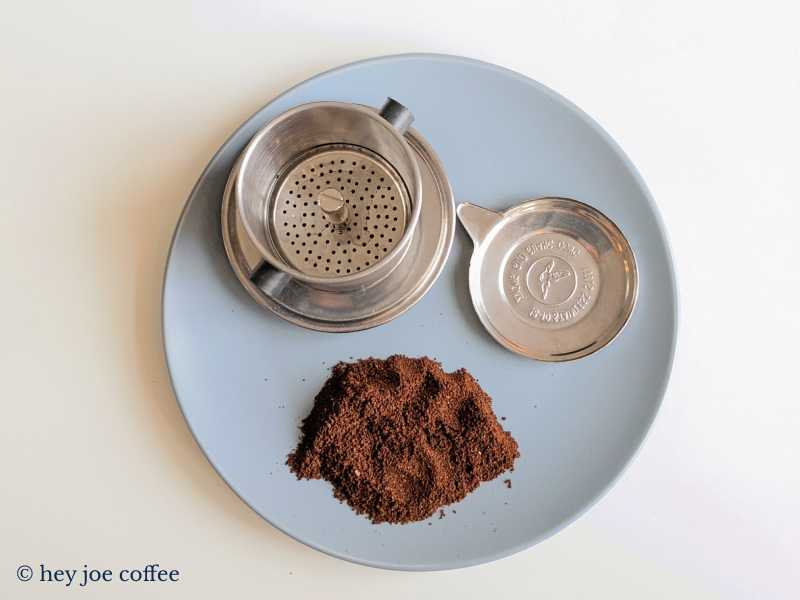
- Boil a cup of water using a regular kettle or a gooseneck kettle*. You also can boil the water in a kettle and transfer it to a measuring cup to control the pour.
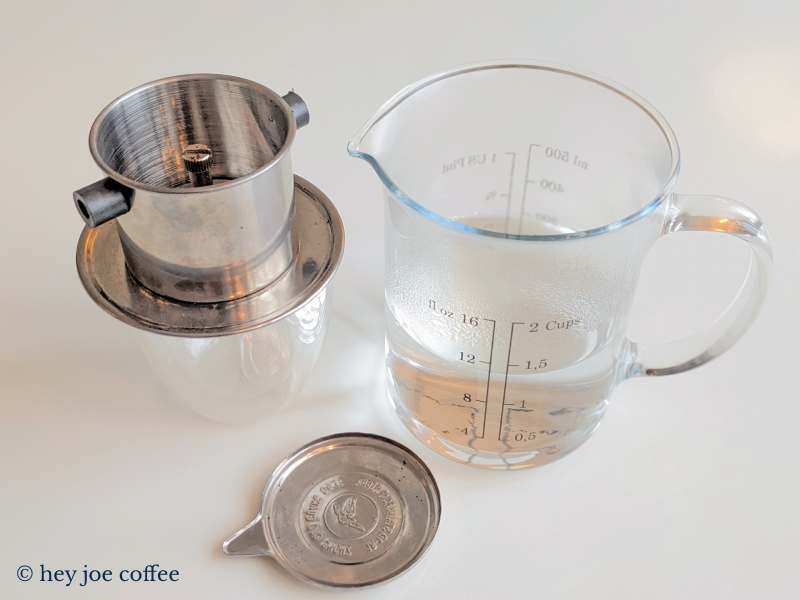
- Wet the grounds just a little and let them expand. If you use a medium-fine grind, this step will allow the small grounds to escape, and you can throw the liquid away.
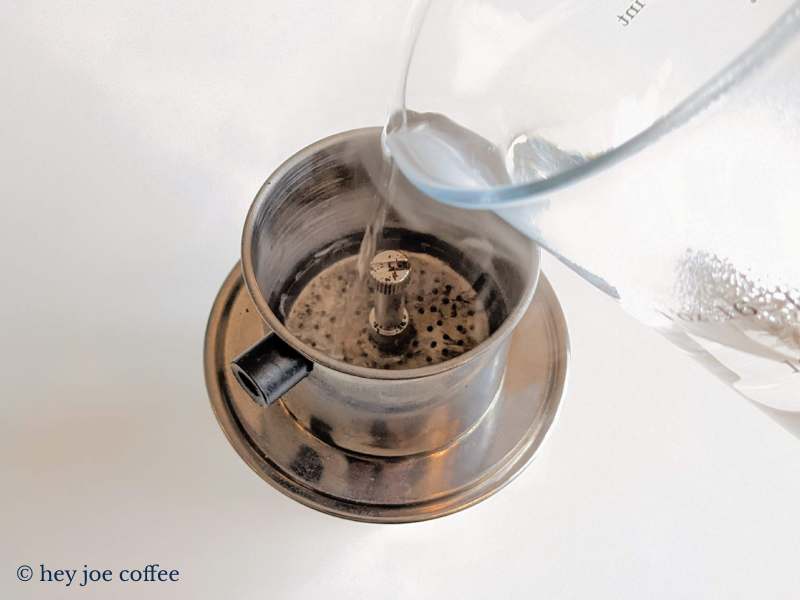
- Fill the chamber with the remaining water and put the lid on. Wait for around 5 minutes for the coffee to drip. Then, remove the phin filter and let it cool off.
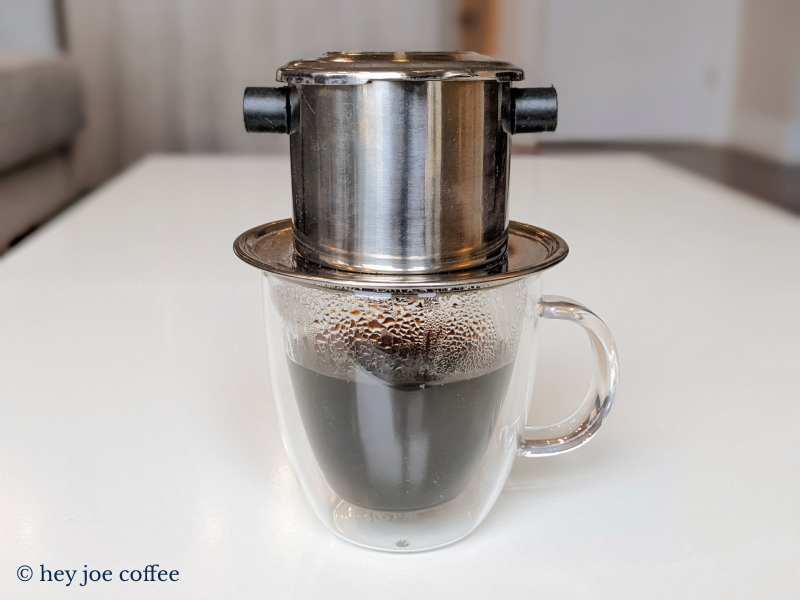
- Take a glass and add 2 to 3 tablespoons of condensed milk. If you want your coffee less sweet and more robust, you might scale down the milk. Fill the up the rest of the glass with ice.
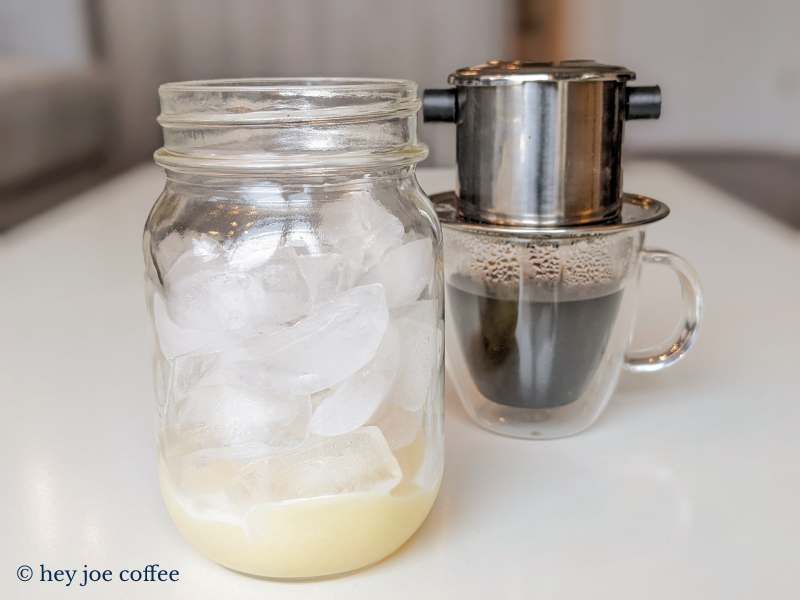
- Finally, add the brewed coffee to the glass and stir to combine. Enjoy your iced Vietnamese coffee made with a phin filter!
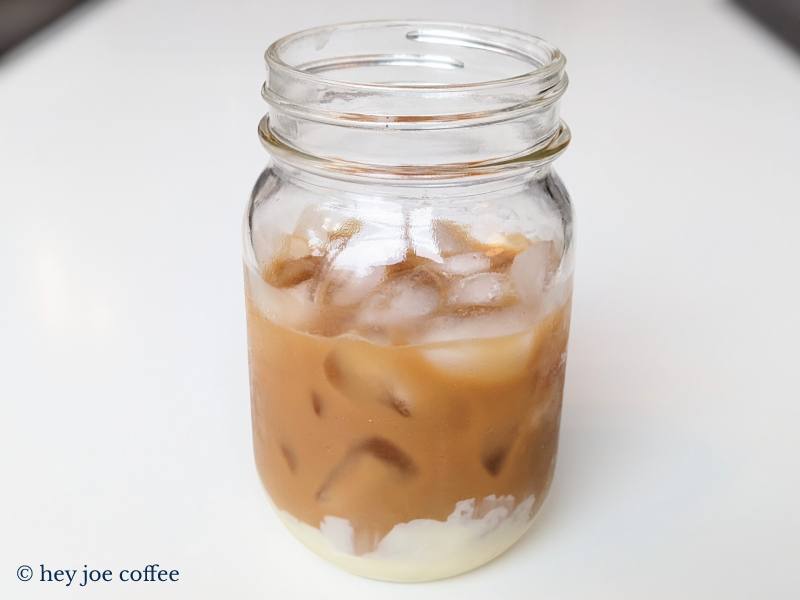
Notes
*A gooseneck kettle helps the ground coffee bloom for best flavor extraction.
Phin vs. French Press vs. Pour Over vs. Aeropress
Is it worth purchasing a phin filter if it’s similar to other brewing methods? We dive into the differences between comparable methods and what makes phin so special.
Spoiler alert: It’s all in the flavor.
French Press
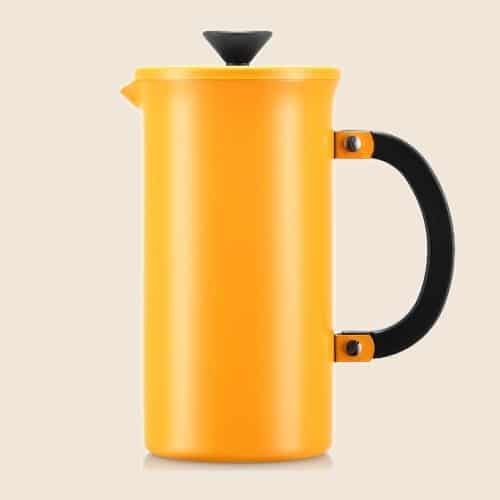
The French press uses immersion brewing while the phin is gravity fed. The French press uses a coarser grind while the phin uses a medium grind, just like drip coffee.
Both of these brewing tools include filtering plates. The French press has a finer mesh filter, while the phin has 2 filtering parts, the plate and the chamber.
Pour Over
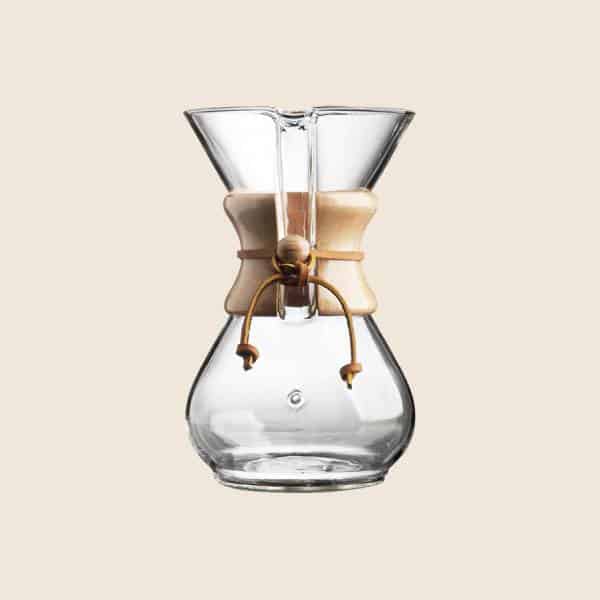
The pour-over method requires more experience, including some trial and error. You need to use a scale and paper filters. But it produces a clean, smooth, and flavorful cup.
The phin is more forgiving and more sustainable. You can master it in two minutes. However, it might include some sediment since the filtering is not as advanced.
Aeropress
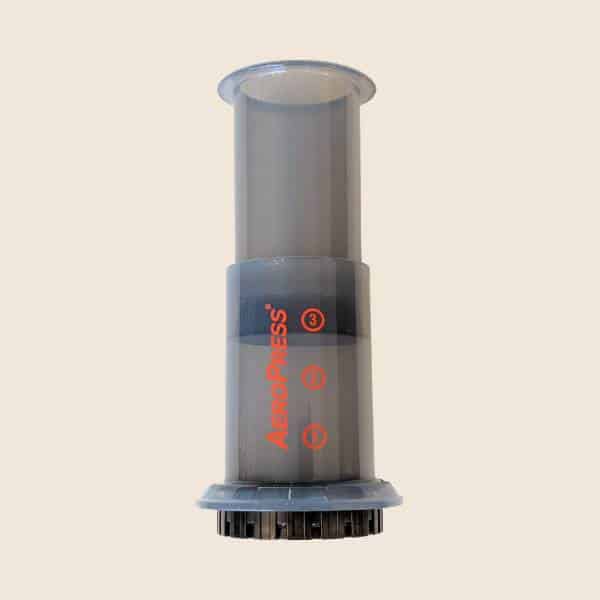
Aeropress is a pressurized brewing method that extracts more chemicals from the beans and produces more flavor. It also uses a paper filter.(2)
The phin allows the coffee to bloom. The blooming is the degassing process that happens when you pour a small amount of water over the grounds and let them sit for 30 seconds. More flavor is extracted this way.
Final Words
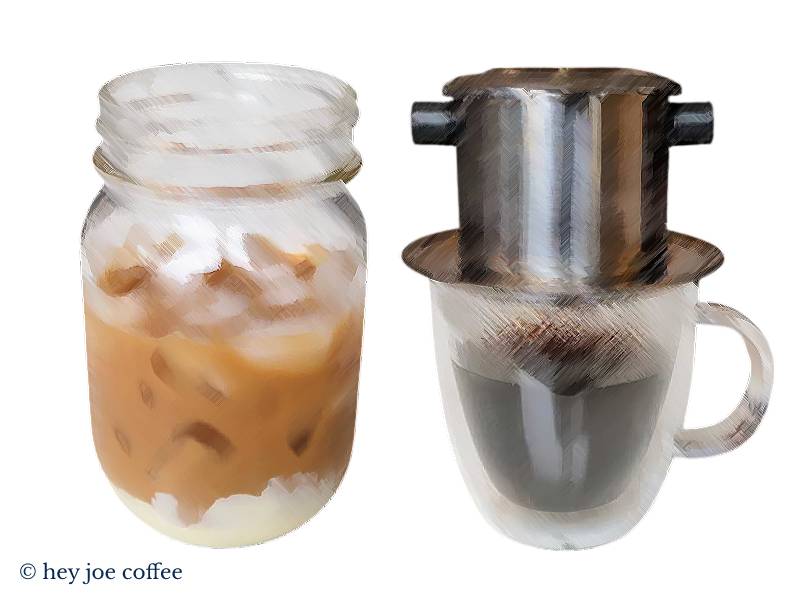
The phin filter is a fun new addition to your barista equipment that produces a flavorful and potent cup of coffee. It provides an insight into the coffee culture of Vietnam. It’s the perfect way to spend hours chatting and enjoying some Robusta beans.
The phin is a sustainable brewing tool that uses gravity instead of automatic pressure. It’s similar to the French press or the drip method but lets the coffee bloom, resulting in a more delicious brew.
More Questions
How long does a Phin coffee take?
Brewing coffee with a phin will take around 4 to 5 minutes. It depends on the grind you use. The water passes quicker through a coarser grind, resulting in a tasteless coffee.
A too fine grind ends up a mud-like mixture. The perfect grind takes a maximum of 5 minutes per cup.
Why does my Phin drip so fast?
If your phin drips too fast, it’s due to a coarser grind. Again, this is simply the water passing through the grounds and not releasing any flavor.
Use medium to medium-fine coffee grounds. If you’re unsure, a safe bet is a pre-ground coffee like Cafe Du Monde.
Can you use Phin for tea?
Generally, you can use a phin to brew tea. However, tea brews best using an immersion method. Therefore, a French press would be a better choice.
If you’re eager to experiment or are in a pinch, try using a phin. But, beware that it won’t release much flavor from the tea.
Wondering where your info comes from? We totally understand. Hey Joe only obtains our information from reputable sources. Contents from this article are sourced from the following publications:

